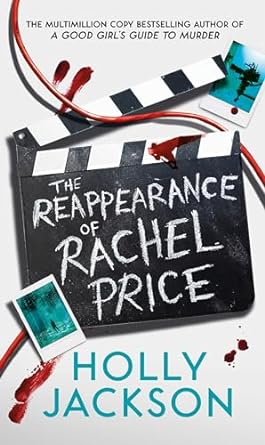The term protagonist is defined as the main character in a piece of fiction. The protagonist can be a good or evil character as long as they are the story’s primary focus. But how do you flesh out a protagonist when creating a story? Do you throw random traits together and call it a character? Or is there something more to making a well-written character that an entire story will revolve around? In this article, I will describe the main characteristics a protagonist should have to be both an intriguing and entertaining main character.
- Backstory: A protagonist’s backstory should describe the character’s early life and how they have gotten to where they are now in the story. It is also important for the protagonist’s backstory to describe their early life. The backstory should also explain what values the character was raised on. Does the character believe in the idea that somebody should protect the weak and that all are equal? Or does the character believe everyone should fend for themselves and that the strongest will prevail? A well-written protagonist should answer these essential questions, and are often best explained in the character’s backstory. A good backstory should reveal why the protagonist acts the way they do and why they hold their beliefs to be true. The protagonist’s backstory could also explain why the character wishes to attain a specific goal. In short, the backstory of a protagonist should define who they are as a character and give reason to why they act the way they do.
- Emotional connections: To have a well-written protagonist, they should be relatable, so it is important to give them people they care about. Having a protagonist care about at least a few people is important because it makes them a more interesting character. Allowing a protagonist to have people they care about creates an interesting relationship between both the protagonist and other characters they care about. If a main character hates everyone and does not care to protect anyone, it can make them, at best, really bland and, at worst, really unlikable. One should note that you can play with this idea of emotional connections by having a character who does not like anyone learn to care about others rather than just themself. Emotional connections are a broad topic because they can relate to multiple types of relationships, such as family, friends, or even romantic relationships. So, to create interesting relationships with a protagonist and other characters, there should be people the protagonist cares about and wants to keep safe.
- Strengths and flaws: For a protagonist to not become one-dimensional, the main character should have both strengths and weaknesses. This concept of having a protagonist have both multiple strengths and flaws can be used to make a character incredibly talented and brave but at the same time have the character be mentally distraught or even depressed. Giving a main character major flaws does not make a character pathetic. But it instead makes the character seem more realistic and human. The flaw of a protagonist can even be a significant challenge that they need to overcome to accomplish their goal. For example, a protagonist’s flaw is coming to terms with the idea of dying and learning not to be afraid of death but to accept it as a part of life. This flaw of being fearful of death could be an interesting and impactful part of a protagonist’s quest. So, having a protagonist encompassing great strengths and weaknesses can create a memorable and well-written character. A protagonist who is very strong and capable in their own right but still has flaws that they ultimately have to come to terms with to become a better version of who they are can create an interesting factor in a story.
- Believable characterization and likability: Above all else, the protagonist should be believable. By believable, they should seem like someone who could actually exist in the real world. The protagonist despite being a fictional character should have realistic goals like protecting those they care about or defeating a corrupted organization/ individual. Having a realistic protagonist can make audiences far more interested in them, further improving the story and main character. Having the protagonist be more believable allows the conflict in the story to appeal to audiences more because it begins to feel like something that could actually happen. The protagonist can also be more believable by expressing emotions or making mistakes as long as the protagonist is not overly emotional or constantly makes mistakes that would make the character less believable and likable. A protagonist can also be improved by being likable because if the audience likes the story’s main character, they will also like it more. A protagonist can be likable by being witty, courageous, honest, and reasonable. Having a likable protagonist allows the audience to see the story through someone they can relate to. The protagonist should be likable and believable because it only further elevates the main character and story.
- Internal and External Conflicts: It has been said many times that a story is nothing without a conflict, and that is the same for the protagonist of a story. If the protagonist of a story has nothing standing between them and their goal, the protagonist and story can quickly become tedious. The protagonist should have a physical threat keeping them from their goal, which could be an evil king, monster, or some powerful corrupt organization. A physical conflict with the protagonist and antagonist of the story creates tension. Realizing that this physical threat could harm the protagonist or those they care about can make the protagonist’s dynamic more interesting. Having a protagonist deal with an internal conflict can better flesh out the character’s emotional turmoil. The protagonist’s inner conflict might not be as action-packed as a physical conflict. However, the protagonist’s internal conflict can be incredibly moving. The internal conflict can even touch on serious themes such as depression, death, and fear. This internal conflict can completely change how the protagonist interprets the world. After the internal conflict is resolved, it can change how the protagonist acts for the rest of the story. It is essential that when both the external and internal conflicts are resolved, they have a permanent effect on the protagonist. Because the protagonist has gone through the challenges of the conflict, they should be affected by them.
- Conclusion: In conclusion, there are a multitude of characteristics that a protagonist should have in a story. It is important to note that a protagonist can be good or evil, but they should have redeeming qualities if they are evil. A protagonist should have a decent amount of information regarding their backstory. The protagonist’s backstory can define the character’s personality and morals. It also describes the protagonist’s upbringing, which can better define the protagonist’s view of the world. The protagonist should also have people they care about because having the protagonist want to protect those they care about can make them more likable and complex. It is also important for the protagonist to have strengths and flaws. It allows the protagonist to be flawed with challenges they need to overcome. The protagonist should also be believable and likable because it makes them a more appealing character to the audience. Having a believable protagonist makes their struggle more relatable because it becomes something that could happen. Having the protagonist be likable allows a story to be told from the perspective of someone the audience can relate to. The protagonist should also have external and internal conflicts that they can overcome throughout the story. This allows the protagonist to become more mature as the story progresses.











